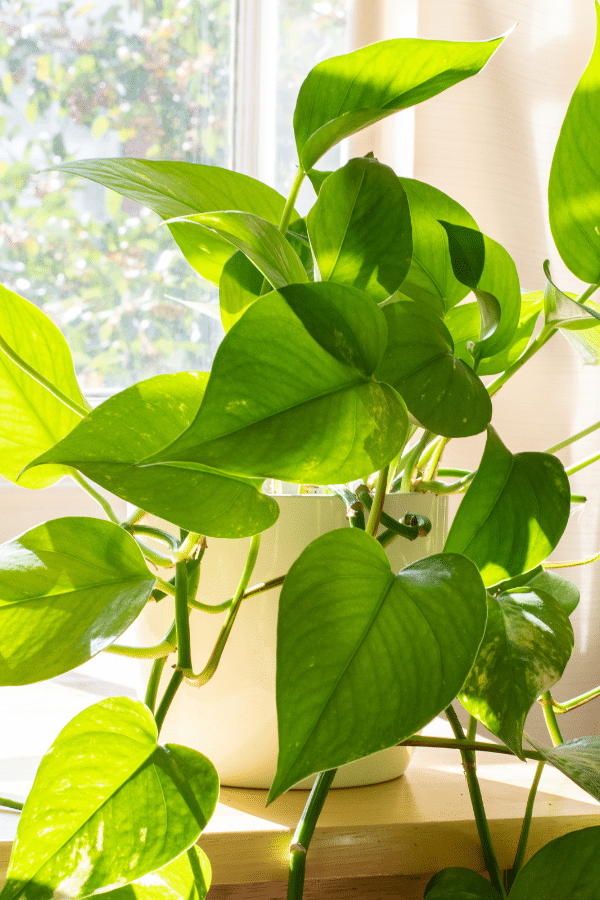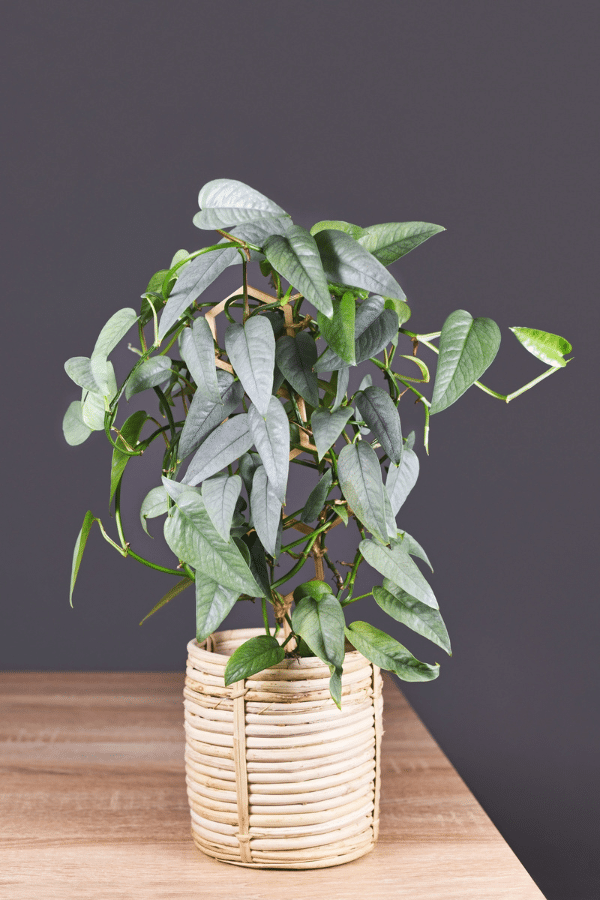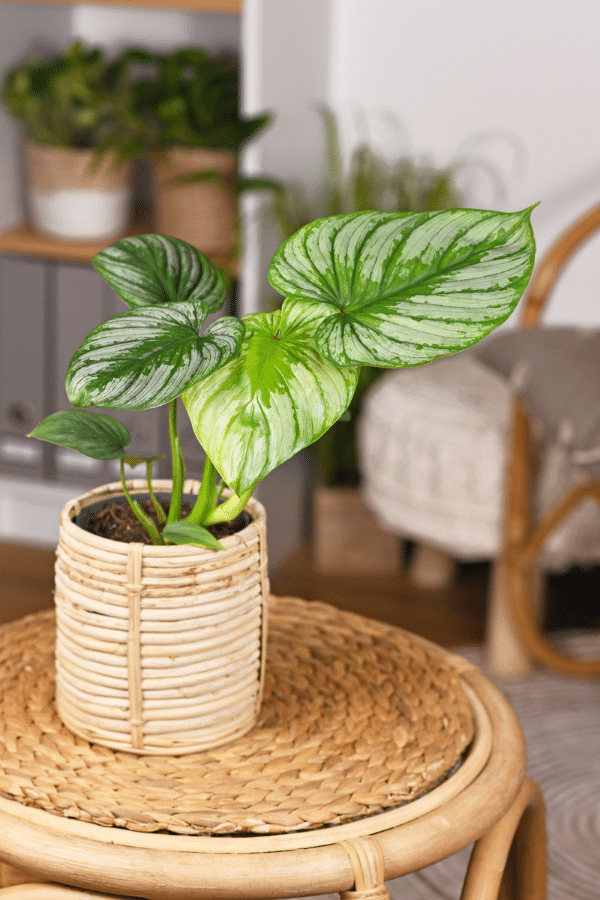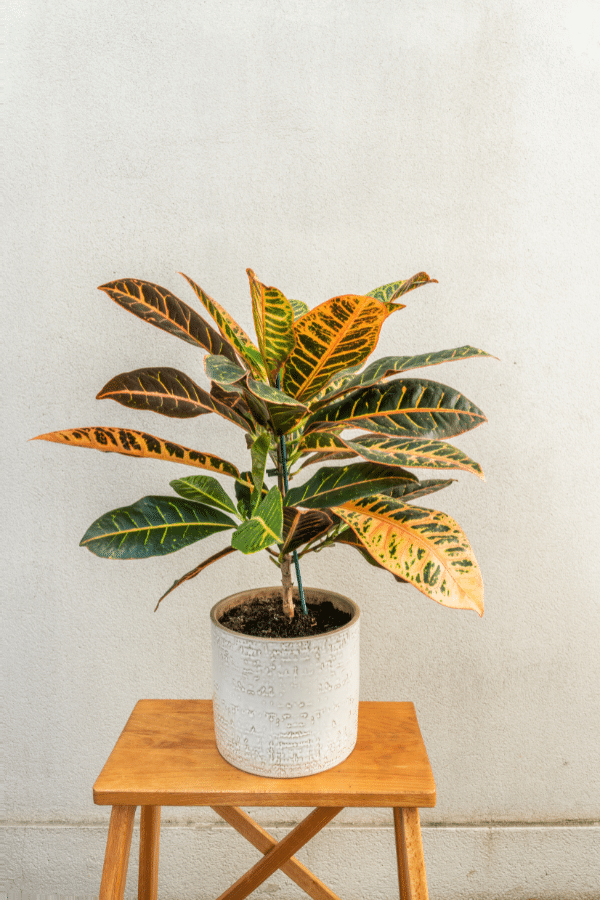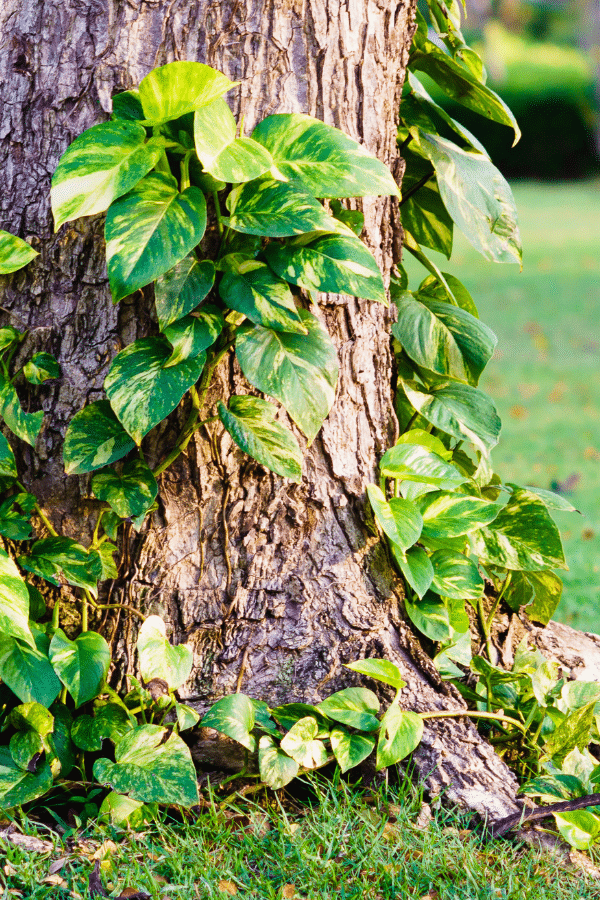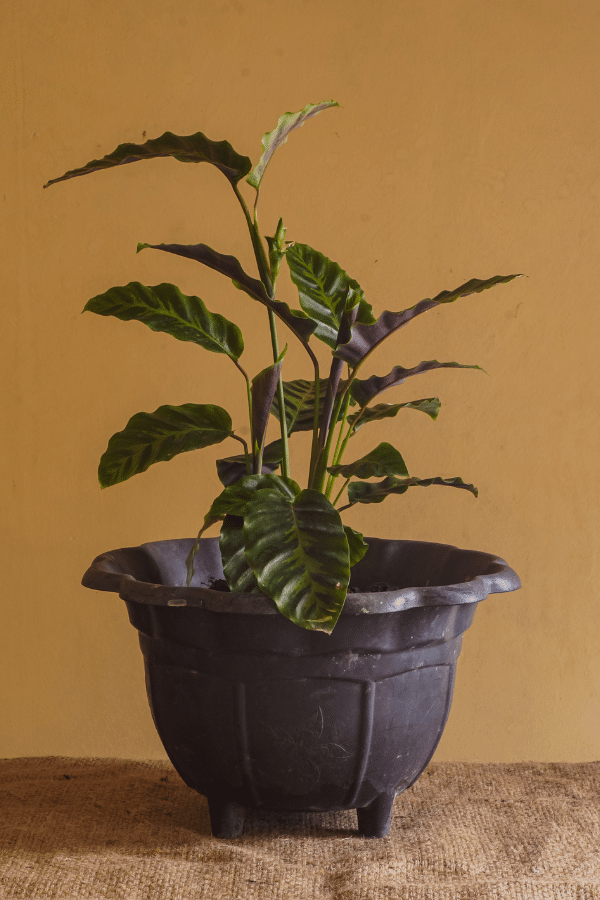Pothos Fertilizer: Best Fertilizers for Your Pothos to Grow Like Crazy
Best Fertilizer for Pothos
There is a common misconception when it comes to fertilizers, most people think fertilizers are exactly like plant food. However, that is not true. Fertilizers are the additional micro and macronutrients that plants need to grow big, healthy, and beautiful. It is possible for your plant to survive without fertilization, but it is extremely unlikely that it would thrive and be in its best form.
Owning a houseplant is more than just making sure you water the plant every couple of weeks. If you want your pothos to have healthy growth with new leaves and long vines, you need to make sure you are fertilizing it. The fertilization of houseplants can be one of the most commonly overlooked aspects of plant care, especially houseplant care. However, providing your plants without proper nutrition and proper feedings are very essential to grow healthy and happy plants.
When it comes to houseplants, they are not like outdoor plants, where they are able to receive all the nutrients they need through natural sources. Houseplant owners have to specifically pay attention to the care they give to their indoor plants, after a few months, your plant has consumed all the nutrients that the soil has to offer, however, if you add in fertilizer, the soil will continue to offer nutrients to the plant. The best type of houseplant fertilizers are liquid and slow-release types, but there are other varieties as well – compost, granules, and worm castings.
Fertilizing is the only way to make sure your plant is receiving the necessary macronutrients and micronutrients, both types of nutrients are very important and required in your plant’s health. The idea of fertilizing sounds like it may be easy and simple, but when it comes to houseplants, the one thing you will learn, if you have not already learned it, is that nothing is as easy and simple as you think!
Pothos are extremely fast-growing plants, so these plants benefit from a regular fertilization schedule. However, finding the appropriate fertilizer for your pothos can be a challenge, which is why we have created this guide. By the end of this guide, you will know what kind of fertilizer to use, the signs you should look for when your pothos need fertilizing, important fertilizing ingredients, how to actually fertilize your plant, and when and how often fertilization should happen.
When to Fertilize
During the pothos growing season, it should be fertilized more often as opposed to less often during the dormant winter season. Ideally, pothos should be fertilized more often during the spring and summer, which is their active growing season. And during the fall and winter, they do not need to be fertilized at all because they are usually dormant and not growing. However, if you live in a warm climate and your pothos is still actively growing, you can continue to fertilize it.
It is recommended to begin to fertilize your pothos after you repot it with fresh soil. After a few months, the plant will no longer receive any nutrients from the soil, fertilizing after a repot is the most ideal for these fast-growing plants.
A common problem of pothos is stunted growth, this is a sign they are not getting the proper care they need. Stunted growth can happen for a variety of reasons, but one of the possibilities is a build-up of fertilizer in the soil. This means fertilization is happening too frequently and possibly too much fertilization is being given to your pothos. If you are fertilizing your plant on a regular schedule and you notice that it is NOT growing, it would be a good idea to back off on the routine, and skip a time or two. Once your pothos is showing signs of growth, start fertilizing again!
How Often to Fertilize
During the growing season, it is recommended that you should fertilize your pothos every four to six weeks, if your pothos lack nutrients at any time, their growth will slow. This is why fertilizing is crucial, as mentioned earlier, pothos grow at alarmingly fast rates, thus they need to be given the proper amount of nutrients.
As a reminder, pothos are not like their outdoor counterparts, they are kept indoors, so they do not have access to natural resources as outdoor plants do. Pothos consumed all their soil’s nutrients in about two months, which is why fertilizing is so important. Pothos rely on us to make sure they are given their appropriate nutrients once the nutrients from their soil have been drained. Fertilizer allows the soil to replenish the nutrients for the pothos to continue to consume.

Over Fertilizing Signs
Earlier in this guide, we touched on the possibility of stunted grow as a sign of over-fertilization, there are a few other signs of an over-fertilized pothos including:
- Wilted leaves
- Yellow leaves
- Browning leaf tips
- Crust of fertilizing on surface of soil
- Blackened limp roots
There are many possibilities of why over-fertilization may happen with your Devil’s Ivy:
- Poor drainage of soil
- Excess amounts of fertilizer is added in one sitting
- Fertilizing is happen too frequently
- The incorrect fertilizer is being used
If you notice the signs and you are over-fertilizing, clip the leaves off and remove any excess build up by scraping it off and replenishing with fresh soil. Water your pothos thoroughly to wash away any leftover fertilizer, repot your pothos if the soil does not look great. Make sure to wait for six to eight weeks before fertilizing your pothos again.
Fertilizer Ingredients / What to Look For
As mentioned earlier, plants and all pothos (Epipremnum Aureum) need all types of nutrients, whether they are macronutrients or micronutrients, both are essential in your plants development.
Micronutrients are present in small quantities, such as zinc, copper, and iron to aid the macronutrients. However, macronutrients are the nutrients the plants need the most, this includes Nitrogen, Phosphorus, and Potassium, Macronutrients are vital to the pothos growth and health.
When it comes to fertilizer ingredients in your pothos, you need to remember “NPK ”, this stands for N (nitrogen), P (Phosphorus), and K (Potassium). It is important that these three elements are balanced. You will be able to tell that they are balanced by the NPK ratio, whether it’s 10-10-10, 15-15-15, or 20-20-20. An equal number of numbers crossed the board means that each element is equal to the next.
- Nitrogen – produces protein
- Phosphorus – helps plant size and produce energy
- Potassium – fends off bugs and strengthens root system
- Calcium – essential for plant growth
- Magnesium – essential nutrient for photosynthesis as it’s the core of the chlorophyll molecule. When deficient in magnesium, it will result in stunted growth
- Sulfur – synthesizes starch, sugars, oils, fats and vitamins and relies on sulfur to metabolize nitrogen.
Whether you are making a homemade fertilizer or purchasing one from a store, it is absolutely a requirement to find a fertilizer that contains the above ingredients and is a well-balanced fertilizer. Unbalanced fertilizers can be extremely harmful to your pothos. These ingredients are the most important when it comes to finding an appropriate fertilizer because they aid in the growth and overall health.
Types of Fertilizer
There are several fertilizers to consider when you are trying to figure out what is best suited for your pothos plant. We learned from the section above that you need a fertilizer that is well-balanced and contains all the essential and necessary nutrients that pothos are required to have to survive and thrive. The following are the different types of fertilizers:
- Compost – Said to be one of the best fertilizers this is rich in nutrients and helps improve drainage.
- Worm Castings – provide rich nutrients and health bacteria, can be considered a superfood for pothos and all indoor plants.
- Liquid Fertilizers – the most popular type and is easy to dilute and add to your waterings. It is recommended to dilute liquid fertilizers by one-fourth or one-half the labeled directions because the full concentration is capable of causing chemical burns to indoor pothos.
- Granular Fertilizers – designed for outdoor plants rather than indoor plants. Granular pellets are added directly to the soil and release their nutrients at one time which can be harmful to indoor plants.
- Slow Release Fertilizers – the indoor version of granular fertilizers, due to a special coating, during each watering, small amounts of nutrients are released slowly into the pothos. Fertilizer spikes are a good example of slow release formulas. However, sometimes the NPK is not balanced which makes it the less than ideal choice for pothos.
- DIY Fertilizers – These include natural fertilizers such as coffee grounds, epsom salts, rice water, banana peels, clean egg shells, granulated gelatin, and aquarium water are just a few homemade fertilizers to use.
The best type of fertilizer for pothos are slow-release fertilizers, this is because the fertilizer will slowly fertilize your plant overtime, which would prevent over-fertilizing and is the best choice to make sure you are providing your pothos with the necessary nutrients when it wants.
How to Fertilize Pothos
Depending on what type of fertilizer you use and how your pothos is growing (e.g. in water or soil) will decide how you ultimately fertilize.
If your pothos is growing in water, it is in your plants best interest to replace the water weekly in order to replenish the nutrients.
If your pothos is being gown in soil:
If you choose to fertilize by spreading granules across the top of your soil, you must be mindful to not overdo it. Make sure you push them into the potting soil, gently, and then water your plant.
If you pick the liquid-based fertilizer, you would pour the liquid directly into your soil or mix it with water (however, it is recommended to dilute the fertilizer a bit). Unlike the granules type, there is no need to dig holes before pouring – making this option super convenient and easy! However, it is important to make sure you are not pouring too much fertilizer, it is always better to start small and add more later, if necessary. You can always add more fertilizer but you cannot remove the excess fertilizer.
Using compost or worm casting as fertilizer is relatively easy, you would add compost to the soil and as you water the soil, the compost would distribute the nutrients evenly. However, two problems can happen with this type of fertilizing, compost can be quite foul-smelling and you are unable to control the amount of total nutrients that are released into the soil.
Although it is not required, it is much easier and convenient to use liquid-based fertilizers, if you are looking for an easy go-to option, liquid is the way to go.
Conclusion
In conclusion, fertilizing is an important aspect of plant care that is often overlooked and forgotten, but it is essential in fast-growing plants like your pothos. It is just as important as the type of water you use, the type of soil, or even how much light you provide your plant.
Remember, fertilizer is not just food, but it is the additional nutrients plants need to survive. Fertilizers contain the vital nutrients that are absolutely necessary if you want a plant that thrives in your home! Without proper fertilization, your pothos will not be as healthy as it is capable of being, it will not grow as it should, and overall it would not be in its ideal living conditions and environment.
In this guide, we covered a general overview of pothos fertilizer and why it is important to pothos plants, when to fertilize, how often, signs that you may be over-fertilizing, must have ingredients in your fertilizer, the different types of fertilizers, and exactly how to fertilizer your pothos. It is extremely important to remember that pothos owners must fertilize their plant in order to aid in its health, growth, and beauty. Fertilizing is the key to continue to help pothos thrive, grow long and strong!

